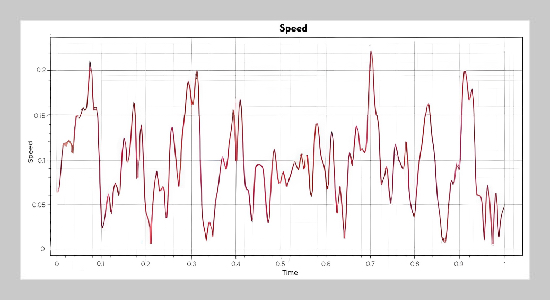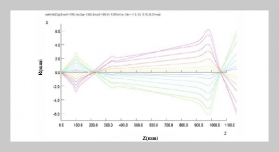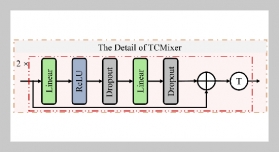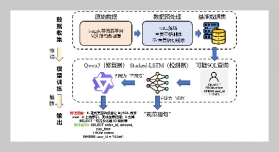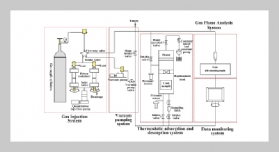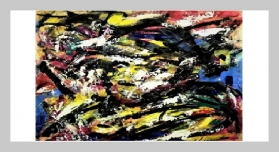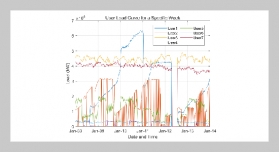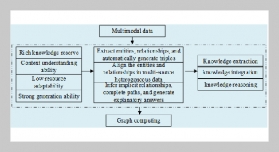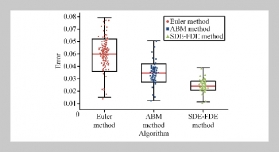- [1] P. A. Potter, A. G. E. Perry, A. E. Hall, and P. A. Stock�ert. Fundamentals of nursing. Elsevier mosby, 2009.
- [2] M. M. Jan, (2006) “Cerebral palsy: comprehensive review and update" Annals of Saudi medicine 26(2): 123–132. DOI: 10.5144/0256-4947.2006.123.
- [3] T. P. Alloway, S. E. Gathercole, A.-M. Adams, and C. Willis, (2005) “Working memory abilities in children with special educational needs" Educational and child psychology 22(4): 56–67. DOI: 10.53841/bpsecp.2005.22.4.56.
- [4] D. R. Desiningrum. Psikologi anak berkebutuhan khusus. 2017.
- [5] D. R. Patel, M. Neelakantan, K. Pandher, and J. Merrick, (2020) “Cerebral palsy in children: a clinical overview" Translational pediatrics 9(Suppl 1): S125. DOI: 10.21037/tp.2020.01.01.
- [6] T. G. Buruk, “Pencegahan dan Tatalaksana Gizi Buruk pada Balita":
- [7] Q. Salfi, D. Saharso, and A. Atika, (2019) “Profile of cerebral palsy patients in Dr" Soetomo General Hospi�tal Surabaya, Indonesia. Biomoleculer and Health Science Journal 2(1): 13. DOI: 10.20473/bhsj.v2i1.12803.
- [8] T. M. O’SHEA, (2008) “Diagnosis, treatment, and pre�vention of cerebral palsy" Clinical obstetrics and gynecology 51(4): 816–828. DOI: 10.1097/grf.0b013e3181870ba7.
- [9] K. Himmelmann and P. Uvebrant, (2014) “The panorama of cerebral palsy in Sweden. XI. Changing pat�terns in the birth-year period 2003–2006" Acta paedi�atrica 103(6): 618–624. DOI: 10.1111/apa.12614.
- [10] L. Collison. Spastic Diplegia–Bilateral Cerebral Palsy: Understanding the Motor Problems, Their Impact on Walking, and Management Throughout Life: a Practi�cal Guide for Families. Gillette Children’s Healthcare Press, 2020.
- [11] S. Armand, G. Decoulon, and A. Bonnefoy-Mazure, (2016) “Gait analysis in children with cerebral palsy" EFORT open reviews 1(12): 448–460. DOI: 10.1302/2058-5241.1.000052.
- [12] I. Analauw and J. Gessal, (2018) “Gangguan Gait pada Cerebral Palsy" Jurnal Medik Dan Rehabilitasi 1(2):
- [13] S. Goldsmith, S. McIntyre, E. Blair, H. Smithers�Sheedy, N. Badawi, and M. Hansen. “Cerebral Palsy: Epidemiology”. In: Neurodevelopmental Pediatrics: Ge�netic and Environmental Influences. Springer, 2023, 479–495. DOI: 10.1007/978-3-031-20792-1_31.
- [14] S. Blundell, R. Shepherd, C. Dean, R. Adams, and B. Cahill, (2003) “Functional strength training in cerebral palsy: a pilot study of a group circuit training class for children aged 4–8 years" Clinical rehabilitation 17(1): 48–57. DOI: 10.1191/0269215503cr584oa.
- [15] C. Gómez-Pérez, J. M. Font-Llagunes, J. C. Martori, and J. Vidal Samsó, (2019) “Gait parameters in chil�dren with bilateral spastic cerebral palsy: a systematic review of randomized controlled trials" Developmental Medicine & Child Neurology 61(7): 770–782. DOI: 10.1111/dmcn.14108.
- [16] E. S. Park, C. I. Park, and J. Y. Kim, (2001) “Compari�son of anterior and posterior walkers with respect to gait parameters and energy expenditure of children with spas�tic diplegic cerebral palsy": DOI: 10.3349/ymj.2001.42.2.180.
- [17] M. Poole, D. Simkiss, A. Rose, and F.-X. Li, (2018) “Anterior or posterior walkers for children with cerebral palsy? A systematic review" Disability and Rehabil�itation: Assistive Technology 13(4): 422–433. DOI: 10.1080/17483107.2017.1385101.
- [18] R. Tao, L. Feng, Z. Xiao, and B.-h. Zhang, (2020) “Pos�terior versus anterior walkers for children with cerebral palsy-biomechanical analysis and energy consumption: a systematic review" Journal of Developmental and Physical Disabilities 32: 877–892. DOI: 10.1007/s10882-020-09731-3.
- [19] H. Koshisaki and S. Nagai, (2021) “Effect of the use of a body weight-supported walker on gait parameters in hemi�plegic stroke patients" Journal of Physical Therapy Science 33(5): 434–438. DOI: 10.1589/jpts.33.434.
- [20] N. Berker and S. Yalçın. The help guide to cerebral palsy. Global Help, 2010.
- [21] J. Massion, A. Alexandrov, and A. Frolov, (2004) “Why and how are posture and movement coordinated?" Progress in brain research 143: 13–27. DOI: 10.1016/s0079-6123(03)43002-1.
- [22] A. Sidiropoulos, R. Magill, and A. Gordon, (2021) “Coordination of the upper and lower extremities during walking in children with cerebral palsy" Gait & Posture 86: 251–255. DOI: 10.1016/j.gaitpost.2021.03.02.
- [23] M. K. Günel, (2011) “Physiotherapy for children with cerebral palsy" Edited by Željka Petelin Gadže: 213. DOI: 10.5772/20321.
- [24] F. Miller. Gait. Springer, 2005.
- [25] M. Mukaino, K. Ohtsuka, H. Tanikawa, F. Matsuda, J. Yamada, N. Itoh, and E. Saitoh, (2018) “Clinical�oriented three-dimensional gait analysis method for evalu�ating gait disorder" JoVE (Journal of Visualized Ex�periments) (133): e57063. DOI: 10.3791/57063.
- [26] A. V. R. Nicolau, H. De Rosario, F. B. Della-Vedova, E. P. Bernabé, M.-C. Juan, and J. López-Pascual, (2022) “Accuracy of a 3D temporal scanning system for gait anal�ysis: comparative with a marker-based photogrammetry system" Gait & Posture 97: 28–34. DOI: 10.1016/j.gaitpost.2022.07.001.
- [27] T. Zult, J. Allsop, J. Tabernero, and S. Pardhan, (2019) “A low-cost 2-D video system can accurately and reliably assess adaptive gait kinematics in healthy and low vision subjects" Scientific reports 9(1): 18385. DOI: 10.1038/s41598-019-54913-5.
- [28] D. Thewlis, C. Bishop, N. Daniell, and G. Paul, (2013) “Next-generation low-cost motion capture systems can pro�vide comparable spatial accuracy to high-end systems" Journal of applied biomechanics 29(1): 112–117. DOI: 10.1123/jab.29.1.112.
- [29] A. Michelini, A. Eshraghi, and J. Andrysek, (2020) “Two-dimensional video gait analysis: A systematic review of reliability, validity, and best practice considerations" Prosthetics and Orthotics International 44(4): 245– 262. DOI: 10.1177/0309364620921290.
- [30] B. Hanley and A. Bissas, (2013) “Analysis of lower limb internal kinetics and electromyography in elite race walking" Journal of sports sciences 31(11): 1222–1232. DOI: 10.1080/02640414.2013.777763.
- [31] B. Dingenen, B. Malfait, J. Vanrenterghem, S. M. Ver�schueren, and F. F. Staes, (2014) “The reliability and validity of the measurement of lateral trunk motion in two�dimensional video analysis during unipodal functional screening tests in elite female athletes" Physical Ther�apy in Sport 15(2): 117–123. DOI: 10.1016/j.ptsp.2013.05.001.
- [32] B. Hanley, C. B. Tucker, and A. Bissas, (2018) “Differ�ences between motion capture and video analysis systems in calculating knee angles in elite-standard race walking" Journal of sports sciences 36(11): 1250–1255. DOI: 10.1080/02640414.2017.1372928.
- [33] N. Shishov, K. Elabd, V. Komisar, H. Chong, and S. N. Robinovitch, (2021) “Accuracy of Kinovea software in estimating body segment movements during falls captured on standard video: Effects of fall direction, camera perspec�tive and video calibration technique" PLoS one 16(10): e0258923. DOI: 10.1371/journal.pone.0258923.
- [34] K. Kirilova and P. Gatev, (2018) “A Complex Semi�automatic Method for Kinetic and Two-dimensional Kine�matic Motion Analysis for Posture and Movement Inves�tigation." International Journal Bioautomation 22(1): DOI: 10.7546/ijba.2018.22.1.57-64.
- [35] F. Roggio, S. Ravalli, G. Maugeri, A. Bianco, A. Palma, M. Di Rosa, and G. Musumeci, (2021) “Technological advancements in the analysis of human motion and pos�ture management through digital devices" World journal of orthopedics 12(7): 467. DOI: 10.5312/wjo.v12.i7.467.
- [36] K. K. Dalal, A. M. Joshua, A. Nayak, P. Mithra, Z. Misri, and B. Unnikrishnan, (2018) “Effectiveness of prowling with proprioceptive training on knee hy�perextension among stroke subjects using videographic observation-a randomised controlled trial" Gait & pos�ture 61: 232–237. DOI: 10.1016/j.gaitpost.2018.01.01.
- [37] W. Choi, J. Wakeling, and S. Robinovitch, (2015) “Kinematic analysis of video-captured falls experienced by older adults in long-term care" Journal of biomechan�ics 48(6): 911–920. DOI: 10.1016/j.jbiomech.2015.02.025.
- [38] P. Fernández-González, A. Koutsou, A. Cuesta�Gómez, M. Carratalá-Tejada, J. C. Miangolarra-Page, and F. Molina-Rueda, (2020) “Reliability of kinovea® software and agreement with a three-dimensional motion system for gait analysis in healthy subjects" Sensors 20(11): 3154. DOI: 10.3390/s20113154.
- [39] A. Sharifnezhad, G. R. Raissi, B. Forogh, H. Soley�manzadeh, S. Mohammadpour, M. Daliran, and M. Bagherzadeh Cham, (2021) “The validity and reliability of kinovea software in measuring thoracic kyphosis and lumbar lordosis" Iranian Rehabilitation Journal 19(2): 129–136. DOI: 10.32598/irj.19.2.670.1.
- [40] A. Puig-Diví, C. Escalona-Marfil, J. M. Padullés-Riu, A. Busquets, X. Padullés-Chando, and D. Marcos�Ruiz, (2019) “Validity and reliability of the Kinovea pro�gram in obtaining angles and distances using coordinates in 4 perspectives" PloS one 14(6): e0216448. DOI: 10.1371/journal.pone.0216448.
- [41] J. Santrock. Ebook: Child Development: An Introduction. McGraw Hill, 2014.
- [42] M. Sarajchi, M. K. Al-Hares, and K. Sirlantzis, (2021) “Wearable lower-limb exoskeleton for children with cerebral palsy: A systematic review of mechanical design, actua�tion type, control strategy, and clinical evaluation" IEEE Transactions on Neural Systems and Rehabilitation Engineering 29: 2695–2720. DOI: 10.1109/TNSRE.2021.3136088.
- [43] M. M. Švehlík, “Gait Analysis in Cerebral Palsy":
- [44] C. L. Vaughan, B. L. Davis, and J. C. O’connor, (1992) “Dynamics of human gait":
- [45] J. Rodda and H. Graham, (2001) “Classification of gait patterns in spastic hemiplegia and spastic diplegia: a ba�sis for a management algorithm" European journal of neurology 8: 98–108. DOI: 10.1046/j.1468-1331.2001.00042.x.
- [46] R. Buraschi, J. Pollet, J. H. Villafañe, B. Piovanelli, and S. Negrini, (2022) “Temporal and kinematic analyses of timed up and go test in chronic low back pain patients" Gait & Posture 96: 137–142. DOI: 10.1016/j.gaitpost.2022.05.027.
- [47] G. Yavuzer, (2009) “Three-dimensional quantitative gait analysis" Acta Orthop Traumatol Turc 43(2): 94–101. DOI: 10.3944/AOTT.2009.94.
- [48] S. J. Hoffman. Introduction to kinesiology: studying phys�ical activity. Human Kinetics, 2009.
- [49] R. B. Dale, (2012) “Principles of rehabilitation" Physical rehabilitation of the injured athlete. Philadelphia: Saunders: 41–66.
- [50] M. K. Lebiedowska, T. M. Wente, and M. Dufour, (2009) “The influence of foot position on body dynam�ics" Journal of biomechanics 42(6): 762–766. DOI: 10.1016/j.jbiomech.2008.12.021.
- [51] S. J. Singleton, S. E. Keating, S. L. McDowell, B. A. Coolen, and J. C. Wall, (1992) “Predicting step time from step length and velocity" Australian Journal of Physiotherapy 38(1): 43–46. DOI: 10.1016/S0004-9514(14)60550-X.
- [52] H. H. Hunter, U. C. Ugbolue, G. G. Sorbie, W.-K. Lam, F. M. Grace, A. Dello Iacono, M. Liang, F. Dutheil, Y. Gu, and J. S. Baker, (2022) “An evaluation of temporal and club angle parameters during golf swings using low cost video analyses packages" Scientific Reports 12(1): 14012. DOI: 10.1038/s41598-022-17175-2.
- [53] I. Peate and S. Evans. Fundamentals of anatomy and physiology: For nursing and healthcare students. John Wiley & Sons, 2020.
- [54] V. Panoutsakopoulos and I. A. Kollias, (2023) “Image�Based Recording and Analysis Methods for the Assistance of Track and Field Coaches to Improve Athletics Train�ing" The Use of Developing Technology in Sports (IKEEBOOKCH-2023-305): 29–49.
- [55] R. T. Yunardi, A. A. Firdaus, and E. I. Agustin, (2017) “Robotic leg design to analysis the human leg swing from motion capture" Bulletin of Electrical Engineering and Informatics 6(3): 256–264. DOI: 10.11591/eei.v6i3.645.
- [56] M. Andriluka, S. Roth, and B. Schiele. “Pictorial struc�tures revisited: People detection and articulated pose estimation”. In: 2009 IEEE conference on computer vi�sion and pattern recognition. IEEE. 2009, 1014–1021. DOI: 10.1109/cvpr.2009.5206754.
- [57] A. McCormick, H. Alazem, A. Morbi, R. Beranek, R. Adler, G. Tibi, and E. Vilé. “Power walker helps a child with cerebral palsy”. In: International Conference on Control, Dynamic Systems, and Robotics. 2016. DOI: 10.11159/cdsr16.129.
- [58] O. Beauchet, C. Annweiler, Y. Lecordroch, G. Allali, V. Dubost, F. R. Herrmann, and R. W. Kressig, (2009) “Walking speed-related changes in stride time variability: effects of decreased speed" Journal of neuroengineering and rehabilitation 6: 1–6. DOI: 10.1186/1743-0003-6-32.
- [59] M. E. Littrell, Y.-H. Chang, and B. P. Selgrade, (2018) “Development and assessment of a low-cost clinical gait analysis system" Journal of applied biomechanics 34(6): 503–508. DOI: 10.1123/jab.2017-0370.
- [60] T. D. Collins, S. N. Ghoussayni, D. J. Ewins, and J. A. Kent, (2009) “A six degrees-of-freedom marker set for gait analysis: repeatability and comparison with a modified Helen Hayes set" Gait & posture 30(2): 173–180. DOI: 10.1016/j.gaitpost.2009.04.004.
- [61] J. W. Osborne. Best practices in data cleaning: A com�plete guide to everything you need to do before and after collecting your data. Sage publications, 2012.
- [62] O. Blin, A.-M. Ferrandez, and G. Serratrice, (1990) “Quantitative analysis of gait in Parkinson patients: in�creased variability of stride length" Journal of the neu�rological sciences 98(1): 91–97. DOI: 10.16/0022-510x(90)90184-o.
- [63] O. Blin, A. Ferrandez, J. Pailhous, and G. Serratrice, (1991) “Dopa-sensitive and dopa-resistant gait parameters in Parkinson’s disease" Journal of the neurological sciences 103(1): 51–54. DOI: 10.1016/0022-510x(91) 90283-d.
- [64] Z. Z. Tian, M. D. Kyte, and C. J. Messer, (2002) “Par�allax error in video-image systems" Journal of Trans�portation Engineering 128(3): 218–223. DOI: 10.1061/ (asce)0733-947x(2002)128:3(218).
- [65] S. J. Obst, R. Bickell, K. Florance, R. N. Boyd, F. Read, and L. Barber, (2022) “The size and echogenicity of the tibialis anterior muscle is preserved in both limbs in young children with unilateral spastic cerebral palsy" Disability and Rehabilitation 44(14): 3430–3439. DOI: 10.1080/09638288.2020.1863482.
- [66] P. M. McGinnis. Biomechanics of sport and exercise. Hu�man Kinetics, 2013.
- [67] T. Hanning, A. Lasaruk, and T. Tatschke, (2011) “Cali�bration and low-level data fusion algorithms for a parallel 2D/3D-camera" Information Fusion 12(1): 37–47. DOI: 10.1016/j.inffus.2010.01.006.
- [68] P. Y. K. Laksana, R. H. Setyanto, L. Herdiman, et al., (2021) “Redesign walker for children with diplegic cerebral palsy using TRIZ method" Jurnal Sistem Dan Manajemen Industri 5(1): 8–14. DOI: 10.30656/jsmi.v5i1.2855.
- [69] G. Paleg and R. Livingstone, (2016) “Evidence�informed clinical perspectives on selecting gait trainer features for children with cerebral palsy" International Journal of Therapy and Rehabilitation 23(9): 444–454. DOI: 10.12968/ijtr.2016.23.9.444.
- [70] A. Bonde, N. K. Mandavgade, S. Wankhede, K. Ghate, S. Nandi, P. Muchulwar, and P. Burde, (2021) “De�sign and analysis of walker with sit to stand assistance" Materials Today: Proceedings 47: 6074–6077. DOI: 10.1016/j.matpr.2021.05.009.
- [71] N. Abdullah, Z. Ibrahim, S. Ramesh, M. A. Muham�mad, S. R. Ya’Akub, and M. Z. B. S. A. Hamid. “De�sign and simulation of low-cost lower limb exoskele�ton for rehabilitation exercise”. In: AIP Conference Proceedings. 2643. 1. AIP Publishing. 2023. DOI: 10.1063/5.0110426.
- [72] A. Kulkarni, V. Melavanki, V. Pavate, and Z. R. Ab�bunavar, (2020) “FINITE ELEMENT ANALYSIS OF ‘A COLLAPSIBLE WALKER’":
- [73] S. M. Bruijn, M. Millard, L. Van Gestel, P. Meyns, I. Jonkers, and K. Desloovere, (2013) “Gait stability in children with Cerebral Palsy" Research in develop�mental disabilities 34(5): 1689–1699. DOI: 10.1016/j.ridd.2013.02.011.
- [74] M. Visintin and H. Barbeau, (1989) “The effects of body weight support on the locomotor pattern of spastic paretic patients" Canadian Journal of Neurological Sciences 16(3): 315–325. DOI: 10.1017/S0317167100029152.L.
- [75] M. Noorkoiv, G. Lavelle, N. Theis, T. Korff, C. Kil�bride, V. Baltzopoulos, A. Shortland, W. Levin, and J. M. Ryan, (2019) “Predictors of walking efficiency in children with cerebral palsy: lower-body joint angles, mo�ments, and power" Physical Therapy 99(6): 711–720. DOI: 10.1093/ptj/pzz041.
- [76] P. C. Minh, T. N. Xuan, T. D. Van, D. N. Minh, et al., (2021) “A game-based solution with interactive toys for supporting upper limb rehabilitation for preschool�aged children with Cerebral Palsy: A preliminary result" Journal of Applied Science and Engineering 24(6): 867–874. DOI: 10.6180/jase.202112_24(6).0007.


